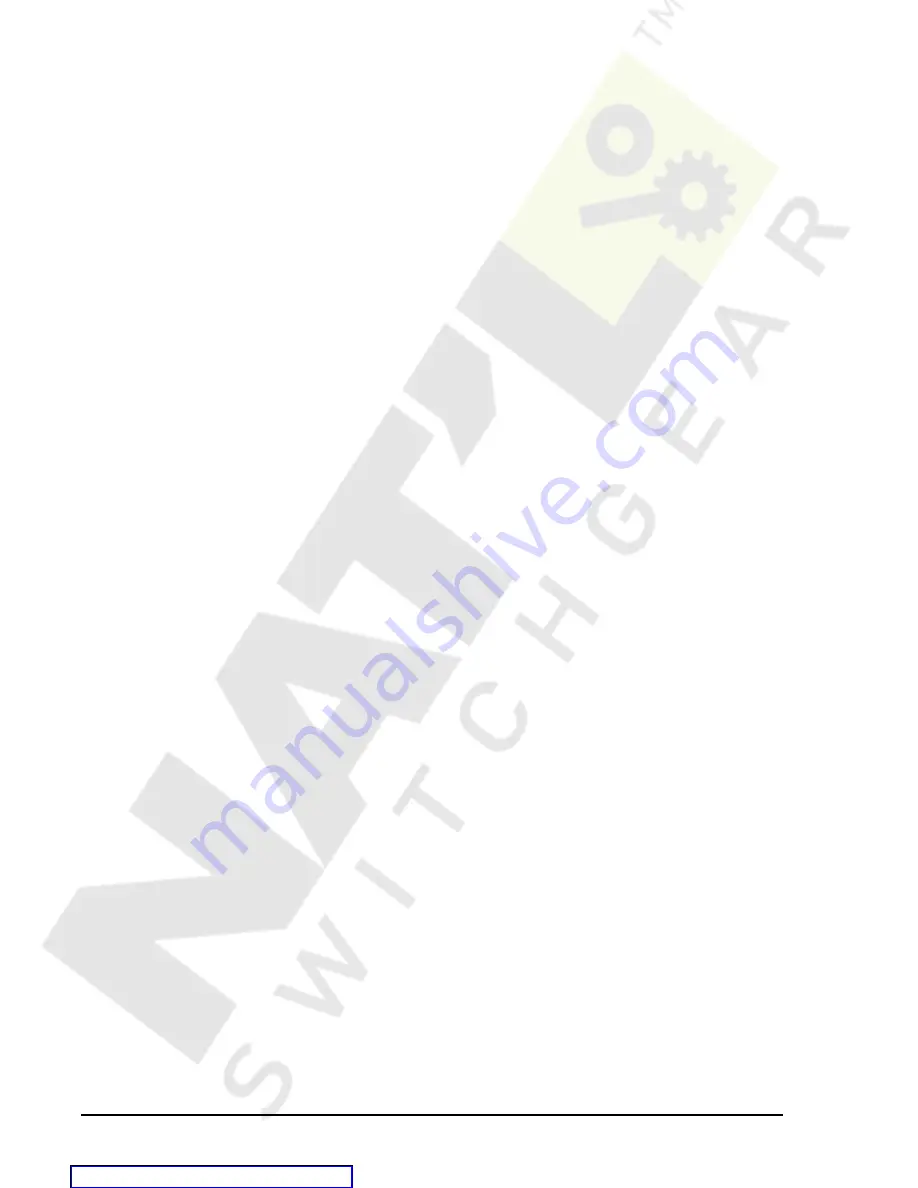
8-52
Application
BE1-951
SL-VO6=0
SL-VO7=VO14*/TRSTKEY
SL-VO8=VO13*/ARSTKEY
SL-VO9=0
SL-VO10=0
SL-VO11=51PT+51NT+51QT+151NT
SL-VO12=51PPU+51NPU+51QPU+151NPU
SL-VO13=IN3+VO8
SL-VO14=VO11+V07
SL-VO15=0
Alarm Latch and Pseudo Target Using the ARSTKEY Logic Variable
On occasion, the user may want the relay to annunciate and latch for a user defined condition originating
internal or external to the relay. This is accomplished by using an AND gate to latch the condition through
one of the relay’s user defined alarms, and the ARSTKEY logic variable to reset the latch. Virtual Outputs
VO13, VO14, and VO15 can be programmed to alarm for any BESTlogic expression. Also, they can be
assigned a user defined label up to a maximum of 10 characters that will be reported in the alarm reporting
function and appear on the relay’s HMI. In the following example, the user defined alarm condition is defined
as a “pseudo target” for an external trip function. Refer to the Section 6,
Reporting and Alarm Functions.
Using the same transformer protection application as in the previous example, the user wants to trip and
lockout the high side circuit switcher for a Sudden Pressure Relay trip. The user also wants a sealed
annunciation on the HMI that reads “SPR_TRIP”.
Referring to Figure 8-16, when the external sudden pressure relay trip contact connected to input 3 closes,
VO13 goes high, sealing the inputs of VO3 and VO4 through AND gate VO8. This allows Output contacts
3 and 4 to transition, and remain in that state until the ARSTKEY variable is asserted. The HMI LCD display
automatically goes to the alarm screen if VO13 is programmed as a major or minor alarm per the automatic
display priority function. In this example, VO13 is programmed to be SN-VO13=SPR_TRIP and will display
as such on the HMI when an SPR trip occurs. The trip and alarm (pseudo target) latch will remain until the
reset button on the front panel of the relay is pressed while the alarm screen of the HMI, menu branch 1.3
is being displayed (reset key of the HMI is context sensitive). Refer to Section 6,
Alarms Function, Retrieving
and Resetting Alarm Reports for detail.
Under Frequency Load Shedding with Restoration Permissive
Under frequency load shedding schemes are designed to operate when the load of a power region outpaces
generation and begins to “drag” or slow system frequency. To save the system from total collapse,
segregated blocks of load representing a percentage of the total power region load are set to trip at various
levels of declining system frequency. For example, an electric utility determines that 30% of its load will
have to be shed for a worst case “load to generation” scenario. They decide to arrange the load in three
blocks set to trip at under frequency levels of 59.7 HZ, 59.5 HZ, and 59.3 HZ. Load restoration is normally
broken down into smaller blocks, minimizing the impact of reapplying load to the system. Knowledge of local
conditions or “restoration permissives” are normally included as part of the system restoration process.
Historically, under frequency load shedding schemes have been applied at the bus level. With the
introduction of numeric, multifunction feeder protection relays, it has become more economical to apply
under frequency load shedding at the circuit level. Also, reliability increases as the user is no longer
depending on a single relay to sense the under frequency condition. If the BE1-951 is not available on every
circuit or user philosophy requires a bus level installation, the BE1-951 can also be applied for bus level
under frequency protection.
The BE1-951 also has an auxiliary voltage input that can be selected for the under frequency function. This
allows the user to supply one under frequency element from a transmission or high side source and another
element from a low side or distribution source. Output of the two elements is connected through an AND
gate thus requiring both under frequency elements to pickup before providing a trip output. Dual source
sensing helps to ensure operation for true system under frequency events.
The following application tips detail examples of a “bus” and “circuit level” under frequency load shed
scheme and restoration “permissive” using dual source sensing and the programming capabilities of the
















































